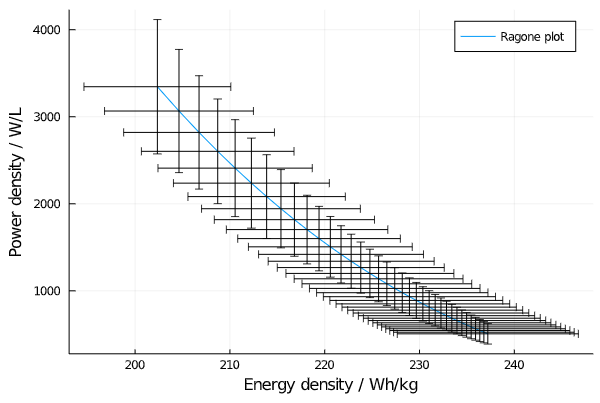Guesstimating power and energy tradeoffs
This question on what areal capacity (mAh/cm²) is ok for batteries and power/energy tradeoffs is quite important. But it’s something we can quickly look at with the help of my cell modelling tool 😉 (with some mods)
I took a quick look, let’s jump in:
The code as it is doesn’t say anything about resistance or diffusion limitations, but I can use the literature to help plug that gap.
This Argonne paper discusses area specific impedance vs thickness, which I can use to get cell impedance.
Just to approximate, I used Datathief to extract the curves and then fit them with a power law.
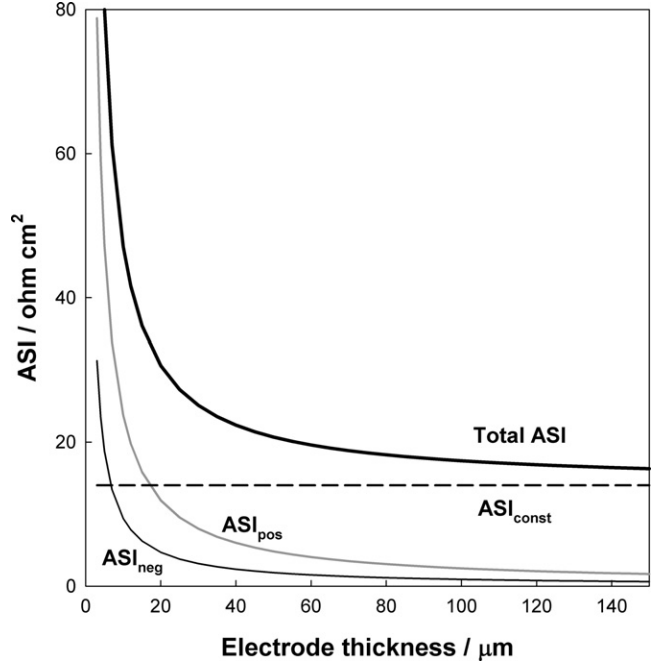
Then for diffusion resistance, I can use the concept of diffusion-limited C-rate described here to look at what the tradeoff of maximum current might be. To do this, I’ve used the same example NMC622/Gr cylindrical cell model in the “quickstart” notebook I tweeted some days back, plus methods shown in the 2nd notebook. All that’s new is code to calculate ASI + DLC from the results of those models:
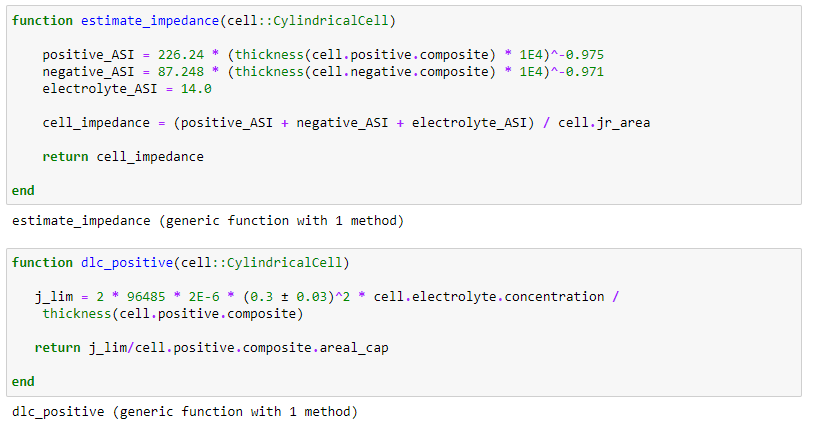
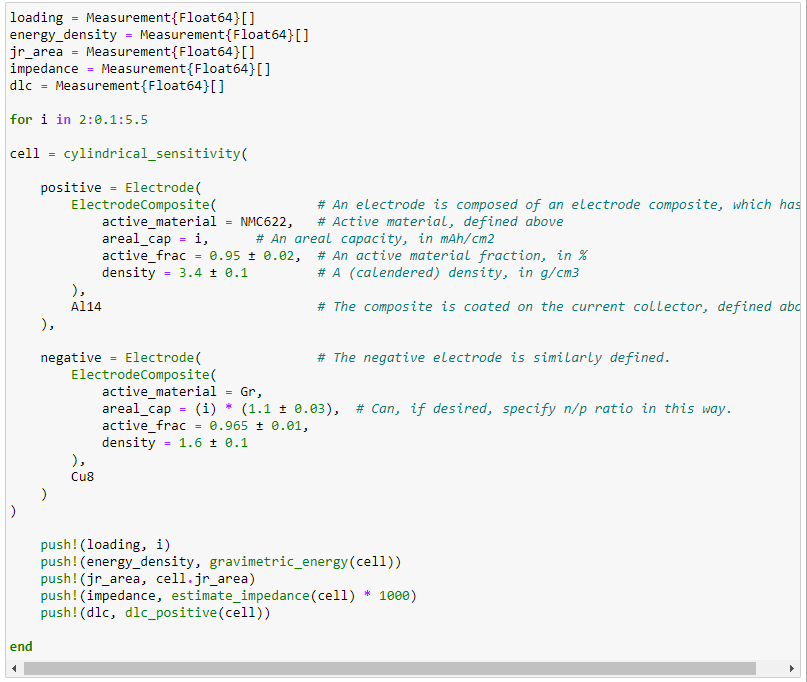
If we consider between 2 - 5.5 mAh/cm² of positive electrode (with n/p ~1.1, reasonable in my experience), we get energy densities of ~200-240 Wh/kg. Not very wide range but seems sensible anyway.
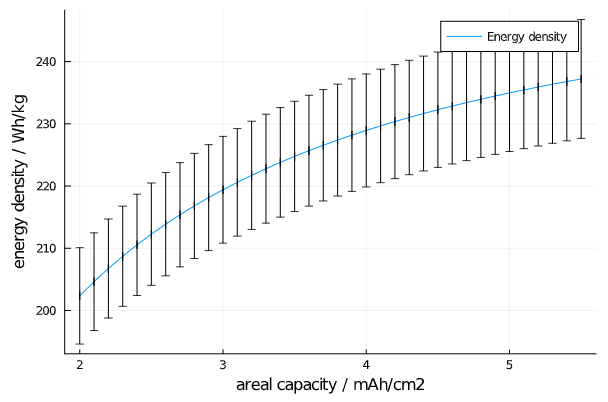
Cell impedance, based on ASI taken from literature, is ~22 - 40 mΩ, increasing continuously with mAh/cm². Mostly this is from thickness-independent components of resistance and smaller total area with thicker electrodes; impedance starts going up again with v. thin electrodes.
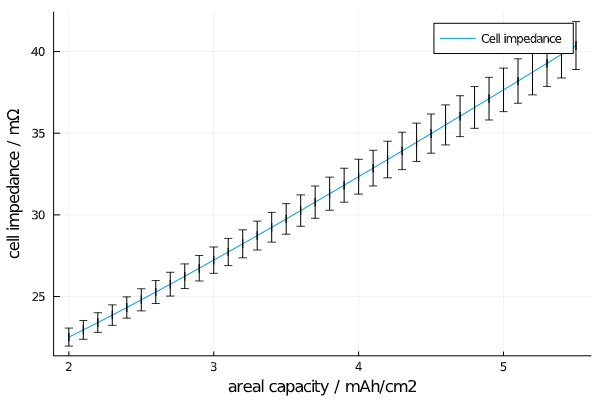
DLC is interesting. Now I’m only considering positive electrode, and no effects like cutoff voltages, Li plating on charge, solid state diffusion etc. But we range from max ~5.6C for thin electrodes to ~0.74C for thick. More significant tradeoffs here.
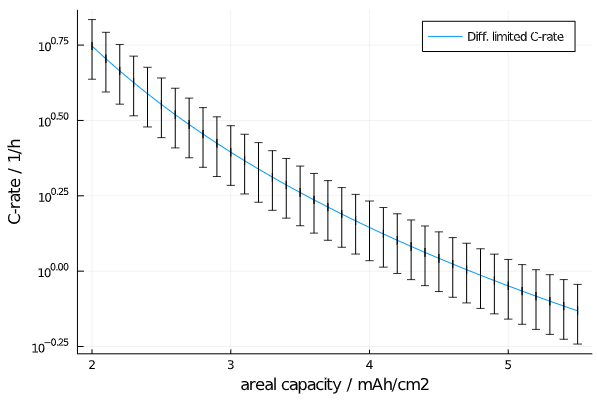
And of course these last two properties vs energy density.
This isn’t precise by any means, which is why we do much more sophisticated modelling of batteries, but this didn’t take very long and now we have at least some idea of what we’re dealing with…
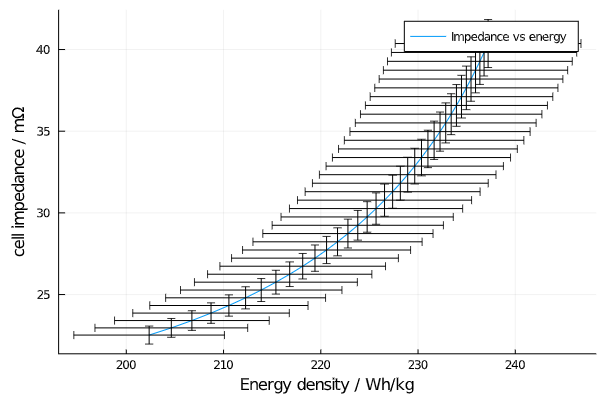

I’ll tidy up this code some time later and add it to the existing repository. Stay tuned…
P.S. I realised logically one could multiply volumetric energy by the limiting C-rate to get a power density, and then you have a Ragone plot of sorts. So this is also illustrative - just the effect of electrode loading/thickness.
